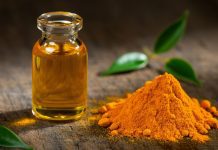
A study has shown that the total white blood cell count in cannabis users is higher among heavy users when compared to non-users.
The study, published in the Journal of Cannabis Research, looked at a number of studies covering cannabis use and the immune system, noting that little is known on circulating white blood cell counts and cannabis use.
The researchers looked at the National Health and Nutrition Examination Survey (2005–2016), a survey designed to be nationally representative of United States non-institutionalised population, and found that there was a modest association between heavy cannabis use and higher white blood cell count but that neither former nor occasional cannabis use was associated with total or differential WBC counts.
White blood cells
White blood cells are the cells in our body that function mainly as immune cells – originating in the bone marrow.
Today, it is known that cigarette smoking generates several chemicals that are implicated in oxidative stress pathways and systemic inflammation and elevated white blood cell count in tobacco cigarette smokers have been well documented, whereas tobacco abstinence is associated with sustained decrease in white blood cell count.
The study highlights how cannabis is able to mediate its effects through the cannabinoid-1 (CB1) and cannabinoid-2 (CB2) receptors.
CB2 receptors can be found in numerous parts of the body related to the immune system, including bone marrow, thymus, tonsils and spleen. CB1 receptors are present in the central nervous system, and at lower levels in the immune system.
Cannabis use and the immune system
The effects of cannabinoids on hematopoiesis, and immune cell proliferation using animal and cell based models has been widely demonstrated and a number of studies have examined the association of cannabis use and white blood cell counts in human immunodeficiency virus (HIV).
The studies have shown a higher white blood cell count in HIV positive men who used cannabis.
Last year a study discovered certain cannabinoids that enhance the immunogenicity of tumour cells, rendering them more susceptible to recognition by the immune system. This discovery is important because the leading class of new cancer fighting agents, termed ‘checkpoint inhibitors’, activates the immune system to destroy cancer cells.
Enhancing recognition of cancer cells with cannabinoids may greatly improve the efficacy of this drug class. The Pascal study was the first to identify a mechanism in which cannabinoids may provide a direct benefit in immunotherapy.
When looking at white blood cell counts the study noted that: ‘Several of the important study limitations merit attention. The observational nature of the study constrained causal inferences. Even though NHANES collects blood and urine specimens, drug testing is not conducted, and cannabis use was self-reported which may lead to non-differential misclassification bias. There was no available information on the route of administration of cannabis (smoking, ingestion, etc.) or cannabis preparation/potency.
‘In addition, the study is based on fairly recent NHANES surveys (2005–16) which might be more representative of the increasing cannabis potency compared to NHANES III (1988–1994) surveys.’
A number of laboratory studies have reported suppression of immune responses with cannabinoid administration, and some epidemiological studies found lower levels of inflammatory biomarkers such as fibrinogen, C-reactive protein and interleukin-6 in adult cannabis users.
The study also noted that the reported anti-inflammatory effects of cannabis were greatly attenuated when body weight is controlled for and suggests that the inverse cannabis-body weight association might explain the lower levels of circulating inflammatory biomarkers in adult cannabis users.
Correlation is not causation
The study highlights that these alterations of immune responses by cannabis use might be associated with increased susceptibility to infections and hence the higher white blood cell count, however, it notes that it is possible that the elevated white blood cell count and suboptimal health status contributed to cannabis use rather than cannabis use caused suboptimal health.
The study states: ‘This hypothesis, though, cannot be tested as NHANES does not collect information on cannabis use motives. Another potential mechanism can be through the effect of cannabinoids on stem cells. Pre-clinical studies suggest that cannabinoids stimulate hematopoiesis and hence this stimulation to bone marrow tissues can be associated with increased circulating white blood cell count in cannabis users.
‘Positive associations between heavy cannabis use, and total white blood cell and neutrophil counts were detected. Clinicians should consider heavy cannabis use in patients presenting with elevated white blood cell count.’
Research on cannabis use and the immune system is lacking and the study suggests further research is needed to understand the immune related effects of different modes of cannabis use.
The study noted: ‘Research on heavy cannabis use and cardiovascular health is needed as systemic inflammation, increased cardiovascular risk and increased mortality risk have been all associated with white blood cell elevation within the normal physiologic range.
‘Studies with repeated measures are needed to study immunomodulatory changes in cannabis users, and whether the mode of cannabis use can differentially affect immune responses.
‘Additional research is needed to understand the immune related effects of different modes of cannabis use and to elucidate the role of proinflammatory chemicals generated from smoking cannabis.’










Apparently there may be a correlation to the time marijuana was first outlawed in the us, and new medical standards and understanding of the time. Hmm, pharma company’s began their rise into wealth when exactly? Medical history proves big pharma has been pushing for a unhealthy america.